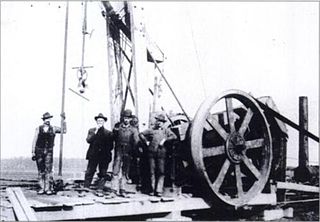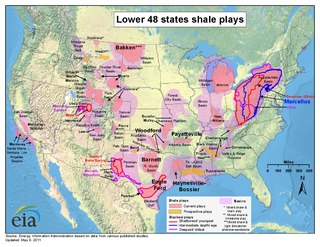 W
WNatural gas was the United States' largest source of energy production in 2016, representing 33 percent of all energy produced in the country. Natural gas has been the largest source of electrical generation in the United States since July 2015.
 W
WThis article is intended as a companion to the Wikipedia article List of pipeline accidents in the United States. Large accidents, reported in the Wikipedia article, Industrial Disasters, are included. The production process encompasses all parts of the process from drilling for fuels to refining or processing to the final product. It also includes storage and disposal of waste. Unless otherwise stated, all accidents are associated with production wells.
 W
WThe American Gas Association (AGA), founded in 1918, is an American trade organization representing over 200 natural gas supply companies and others with an interest in the manufacturing of gas appliances as well as the production of gas. About 92% of the 70 million natural gas customers in the US receive their gas from AGA members.
 W
WThe 2017 production of coalbed methane in the United States was 0.98 trillion cubic feet (TCF), 3.6 percent of all US dry gas production that year. The 2017 production was down from the peak of 1.97 TCF in 2008. Most coalbed methane production came from the Rocky Mountain states of Colorado, Wyoming, and New Mexico.
 W
WThe Domestic Prosperity and Global Freedom Act would direct the United States Department of Energy (DOE) to issue a decision on an application for authorization to export natural gas within 90 days after the later of: (1) the end of the comment period for that decision as set forth in the Federal Register, or (2) the date of enactment of this Act.
 W
WThe Indiana gas boom was a period of active drilling and production of natural gas in the Trenton Gas Field, in the US state of Indiana and the adjacent northwest part of Ohio. The boom began in the early 1880s and lasted into the early 20th century.
 W
WThe Interstate Oil and Gas Compact Commission (IOGCC), formerly the Interstate Oil Compact Commission, is a United States organization, representing the governors of 31 member and seven associate states, that works to ensure the nation's oil and natural gas resources are conserved and utilized to their maximum potential while protecting health, safety and the environment.
 W
WThe State of Alaska is both a producer and consumer of natural gas. In 2006, Alaska consumed 180.4 Bcf of natural gas.
 W
WShale gas in the United States is an available source of natural gas. Led by new applications of hydraulic fracturing technology and horizontal drilling, development of new sources of shale gas has offset declines in production from conventional gas reservoirs, and has led to major increases in reserves of US natural gas. Largely due to shale gas discoveries, estimated reserves of natural gas in the United States in 2008 were 35% higher than in 2006.